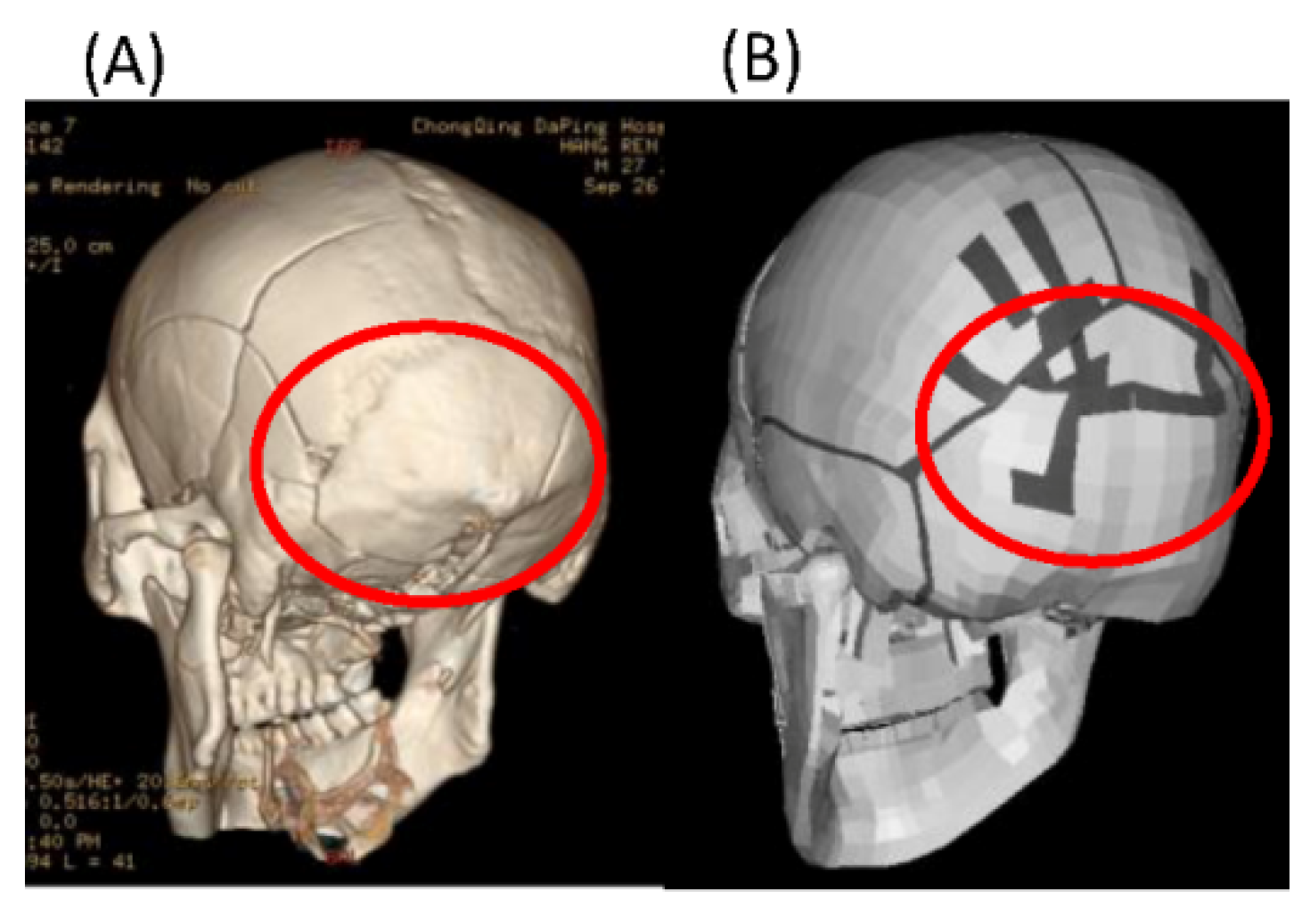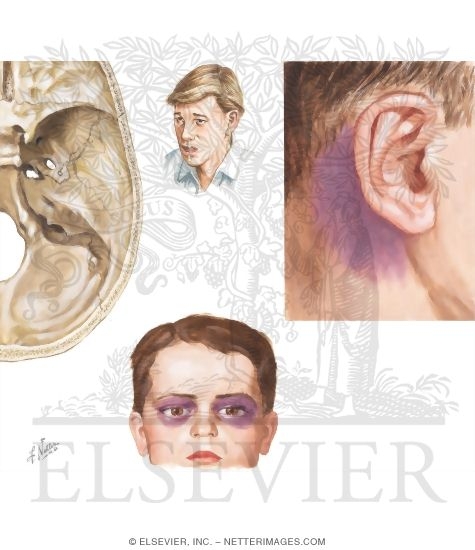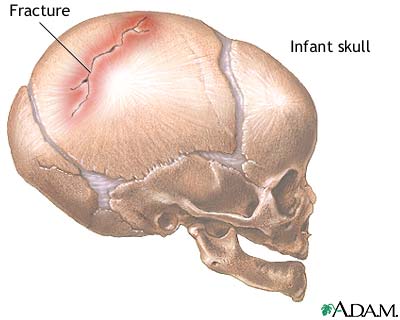

Severe blunt head trauma involves a loss of consciousness from several minutes to many days or longer. There may be longer lasting subtle symptoms including irritability, insomnia, difficulty concentrating, irritability, etc. They may result in headaches, blurred vision or nausea. Minor skull fractures may involve only confusion or a short loss of consciousness. Symptoms of Skull FractureĬommon symptoms of skull fracture include swelling, neck-stiffness, bleeding, changes in pupils, bruising, nausea, sleepiness, blurred speech, etc. A skull fracture is a break in one or more of the eight bones that form the cranial portion of the skull. Battle sign is an eponymous term given to mastoid ecchymosis (bruising of the scalp overlying the mastoid process) and is strongly suggestive of a base of skull fracture, most commonly a petrous temporal bone fracture. If the injured person is vomiting, while stabilizing his neck and head, one should turn him to his side. If there is bleeding at the place of the blow, one should apply pressure (and never remove the original cloth, but put additional on top of it). It the injured person needs to be moved, one must stabilize the head and neck by placing hands on both sides of the neck of the injured and under the shoulders. However, if unconscious, one should not move him, but call the ambulance. In the case of head trauma, if the person injured is conscious, he should be taken to the hospital immediately. First-Aidįirst of all, one must check the breathing and circulation. There are two types of trauma: penetrating trauma (caused by sharp instruments or bullets, usually the person needs surgical assistance) and blunt head trauma (caused by direct blows to the head or from swift deceleration force, such as in a car accident). The most common cause of skull fracture is trauma.

Mohandas, Sourabh Jain, and Saurabh Sharma 2018 Jul-Sep ✓ Fact confirmed: Analysis and Clinical Importance of Skull Base Fractures in Adult Patients with Traumatic Brain Injury Jyothish Sivanandapanicker, Milesh Nagar, Raja Kutty, B. Cerebrospinal fluid fistula leak lasted for more than 10 days in 8 patients, of which 4 patients required surgical repair.

A basilar skull fracture can produce several distinctive signs. If you receive immediate medical attention for a basilar skull fracture, your prognosis will usually be good. A blow to the back of the head can result in a fracture at the base of the skull. Culture of only 5 patients suggested bacterial meningitis. Head trauma is fairly common during a motor vehicle accident.Forty-three patients had cerebrospinal fluid fistula leak with cerebrospinal fluid fistula rhinorrhea being more common. Isolated anterior cranial fossa fracture was most common (50%).

Most common cause was road traffic accident (84.54%).About 81.44% patients were male and 29.9% were Other signs of anterior basilar skull fractures include partial or total loss of vision and smell as well as eye movement defects due to cranial nerve damage.Basal skull fracture was most commonly associated with moderate-to-severe head injury (73.19%).During the study period, 194 of 5041 head injury patients had evidence of basal skull fracture (3.85%).With changing trends in head injury, there is a need to reassess incidence and pattern of basal skull fracture pattern, cerebrospinal fluid fistula leak, meningitis, and management protocol. Unlike typical bruises that form from a direct injury, Battle’s sign isn’t caused from an injury at that location.Basal skull fracture is rare in head injury patients and occasionally goes unnoticed which may lead to cerebrospinal fluid fistula. If you’ve had a recent head injury, broken nose, or broken cheekbone, a bruise behind the ear might be related to this condition. head injuries from not wearing a helmet (such as when bike riding).Skull fractures often occur as the result of a serious injury, fall, or accident. Soft tissue swelling, or an underlying brain abnormality, may be associated. no role for prophylactic antibiotics (doesn’t reduce the risk of meningitis) frequent cultures of leaking or draining CSF should be taken (send. Any injury severe enough to fracture the skull could put these other structures at risk. CT Look closely at the initial scout image as this may demonstrate a fracture. risk of meningitis from direct contact of CSF to sinus, nasopharynx or middle ear. The danger is from associated injuries to the brain, spinal cord, and blood vessels that run through the skull to feed the brain. Fractures to the base of your skull can occur behind your ears or nasal cavity, as well as near part of your spine.Īccording to Johns Hopkins Medicine, it’s the most serious and most common type of skull fracture. This type of fracture occurs at the base of your skull. Battle’s sign is primarily caused by a type of serious head injury called a basilar skull fracture, or basal fracture.


 0 kommentar(er)
0 kommentar(er)
